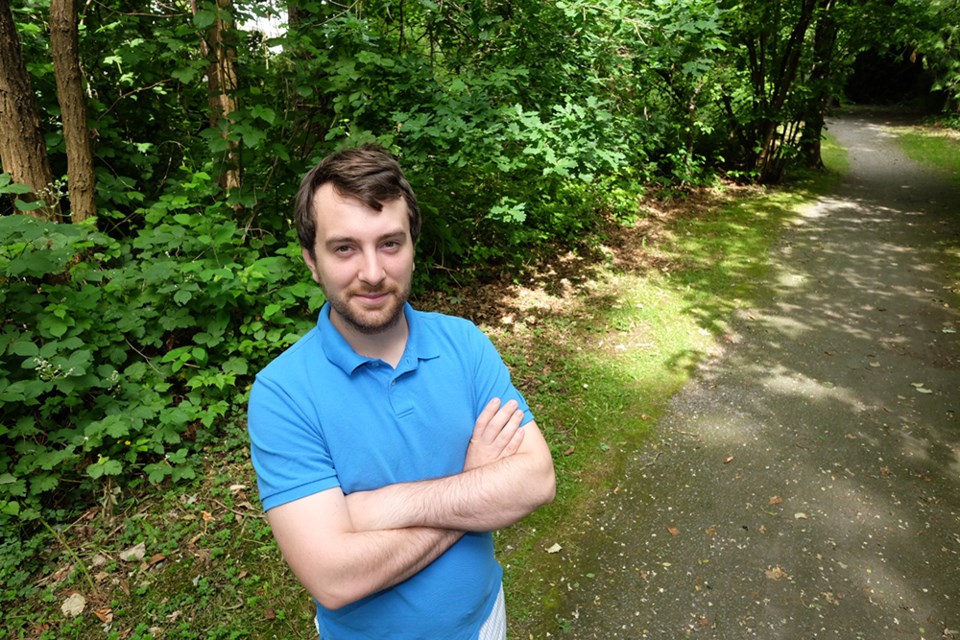Burnaby resident Kyle Empringham and Sujane Kandasamy were awarded a Youth Conservation Award from the Canadian Wildlife Federation for their work on TheStarfish.ca, a website and non-profit organization focusing on positive solutions to environmental problems. The site attracts more than 180,000 visits per year, mostly from Canadians aged 15 to 30. The NOW had a chat with Empringham about what makes TheStarfish.ca so special.
Question: Tell me the story behind the starfish name.
Answer: A boy walks up to a shoreline and sees hundreds of starfish washed up on shore, drying in the sun. He picks one up, looks out at the water, and tosses it back into the ocean. He repeats this process a few times before a man walks up to him and says, "There are too many starfish on this shore. You won't save them all and you won't make a difference." The boy picks up another starfish, tosses it into the ocean, and says to the man, "I made a difference to that one."
The Starfish Canada is about how every contribution to environmental efforts can make a difference. From the conservation of species to energy reduction initiatives, we showcase a wide range of community projects that inspire and motivate our readers to take action locally.
The Starfish Canada from The Starfish Canada on Vimeo.
Q: Is Starfish.ca an online publication or an activist group?
A: We are predominantly an online publication that provides a forum for youth to showcase the amazing work that's being done across the country. Canada's sheer size makes it difficult to understand what is going on in the environmental field, particularly at a local level. Our community-based approach allows Canadians to understand what youth are doing to create a better future for our nation. We also host workshops in local communities to understand what's important to each area and how we can best assist them in achieving their goals.
Q: Your group does workshops with students on subjects like in-vitro meat. What is that and what are the issues around it?
A: Scientists have come up with a way to create meat in the lab - no animal cruelty required. With this new innovation, we have gone to classrooms and asked students to debate whether or not they would eat lab grown meat. It's a great way to think about a wide variety of issues - the ethical treatment of animals, the greenhouse gases that are produced from raising cattle and transporting meats, and more.
Q: We're bombarded with stories about worsening climate change and oceans acidifying - a lot of scary and very real phenomenon, but you've chosen to focus on positive solutions. Tell me a bit about that strategy. Why is it so important to stay positive?
A: Environmentalism is sometimes thought to be rooted in problems. When you think of environmentalism, you might be reminded of climate change or the loss of iconic species or toxins in our air and waters - those are issues we have to overcome to have a healthy, clean community. It can be downright depressing to think of all the challenges we are facing. Our approach focuses on optimism because it's productive. It helps our readers - environmentalists and non-environmentalists alike - to see the way forward, that solutions are available and plausible and that we can work together to create change.
Q: What are our most pressing issues on the environmental front in Burnaby?
A: I think the biggest issue on the mind of Burnaby residents is the proposed Kinder Morgan pipeline that's now planned to cut through Burnaby Mountain. I've seen and heard lots of opposition to pipelines on the B.C. coast. Solutions will require a consistent voice from Burnaby residents and the municipal government that states a clear position on whether a pipeline is what the community wants and for stakeholders to give those opinions large weighting in the decision-making process. Making environmentally conscious and sustainable communities requires listening to constituents and letting them be the driving force behind community growth - ignoring that would be a mistake.



